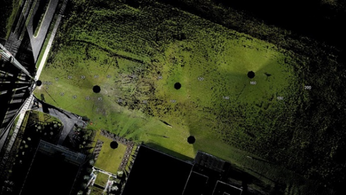
The Significance of Sensor Diversity in Self-Driving Cars
Discover why sensor diversity is crucial for the development of self-driving cars and how it impacts the future of autonomous vehicles.
Self-driving cars have been a topic of intense discussion and development for several years now. While many companies focus on a range of sensors like LIDAR, radar, and ultrasonic sensors, there are companies that insist on a diversified sensor approach for increased safety and accuracy.
The significance of sensor diversity in self-driving cars cannot be overstated. With various sensors working together, autonomous vehicles can gather a more comprehensive set of data about their environment, enabling them to make informed decisions in real-time.
In recent research studies, it has been found that utilizing different types of sensors in autonomous vehicles not only enhances their ability to detect and recognize objects accurately, but also improves their capacity to respond to unexpected events or hazardous situations. This is crucial in ensuring the safety of passengers and other road users.
One such approach is the use of a combination of LIDAR, radar, and ultrasonic sensors. LIDAR, which stands for Light Detection and Ranging, uses laser beams to create a detailed 3D map of the surroundings. Radar technology relies on radio waves to detect objects and measure their distance and speed. Ultrasonic sensors use sound waves to determine the distance between the car and nearby objects.
By combining the data from these sensors, autonomous vehicles can achieve a higher level of perception and situational awareness. For example, LIDAR can provide precise information about the shape and distance of objects, while radar can detect the speed and direction of moving vehicles. Ultrasonic sensors can detect smaller objects and offer more accurate distance measurements.
The practical applications of sensor diversity in self-driving cars are vast. It enables vehicles to navigate complex environments, such as crowded urban streets, with greater accuracy and efficiency. It also enhances the ability of autonomous vehicles to adapt to different weather conditions, as some sensors may perform better in certain weather conditions compared to others.
The broader implications of sensor diversity in self-driving cars are not limited to the automotive industry alone. It has the potential to revolutionize transportation, making it safer and more accessible for everyone. Additionally, the developments in sensor technology can have impacts in other fields, such as robotics and industrial automation.
In conclusion, sensor diversity plays a crucial role in the development and advancement of self-driving cars. By utilizing a combination of LIDAR, radar, and ultrasonic sensors, autonomous vehicles can achieve higher levels of accuracy, safety, and adaptability. This technology has the potential to reshape the future of transportation and have far-reaching implications across various industries.
LiDAR INSIGHTER Newsletter
Join the newsletter to receive the latest updates in your inbox.



